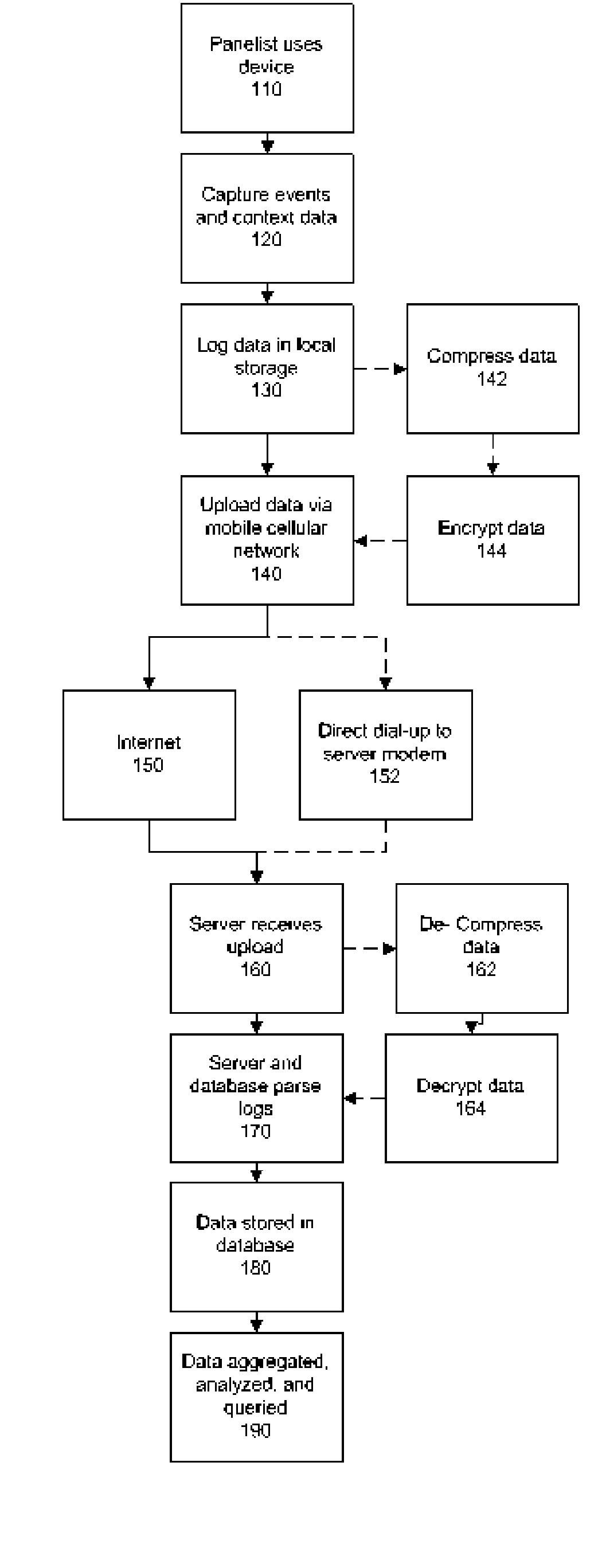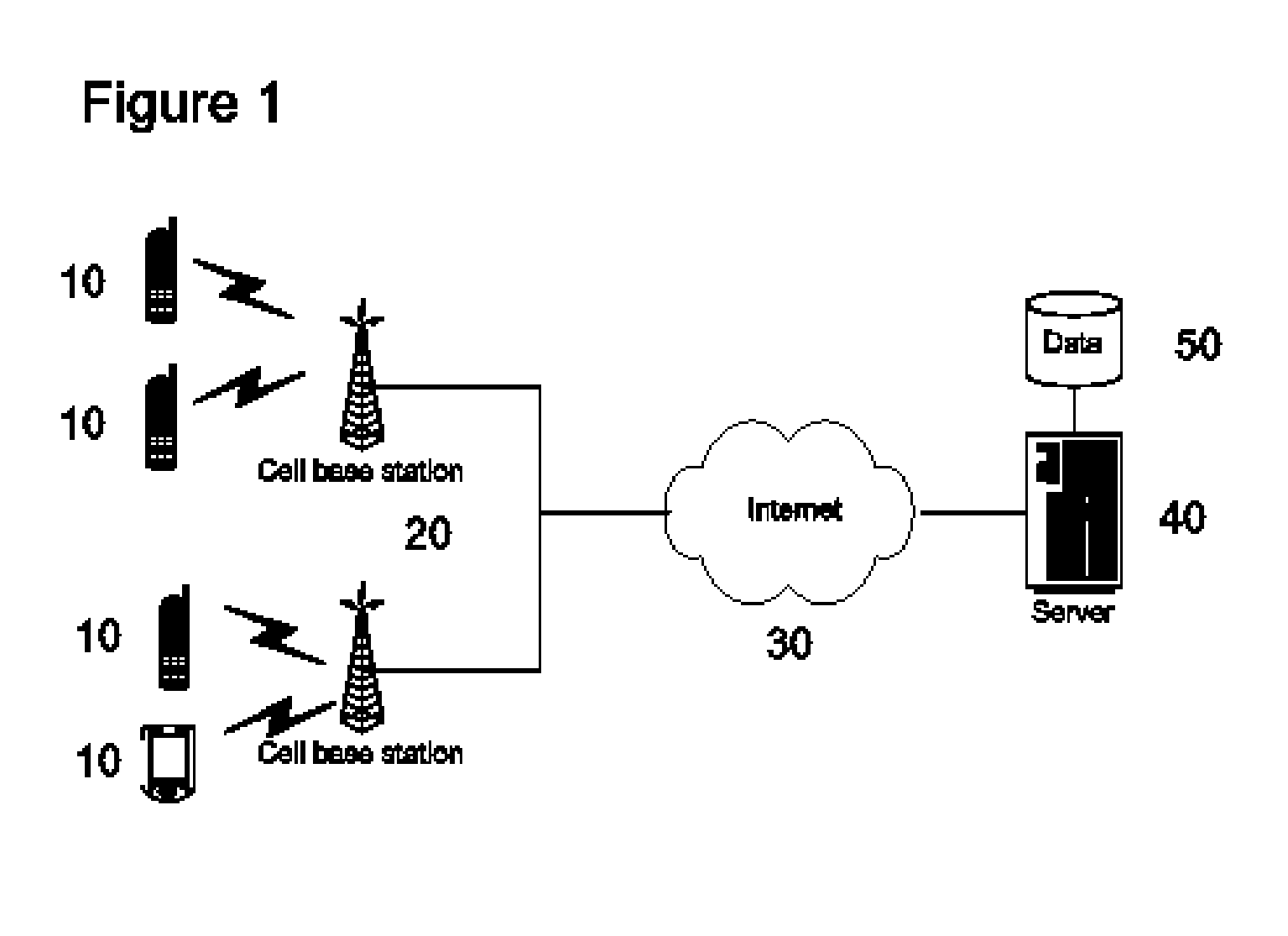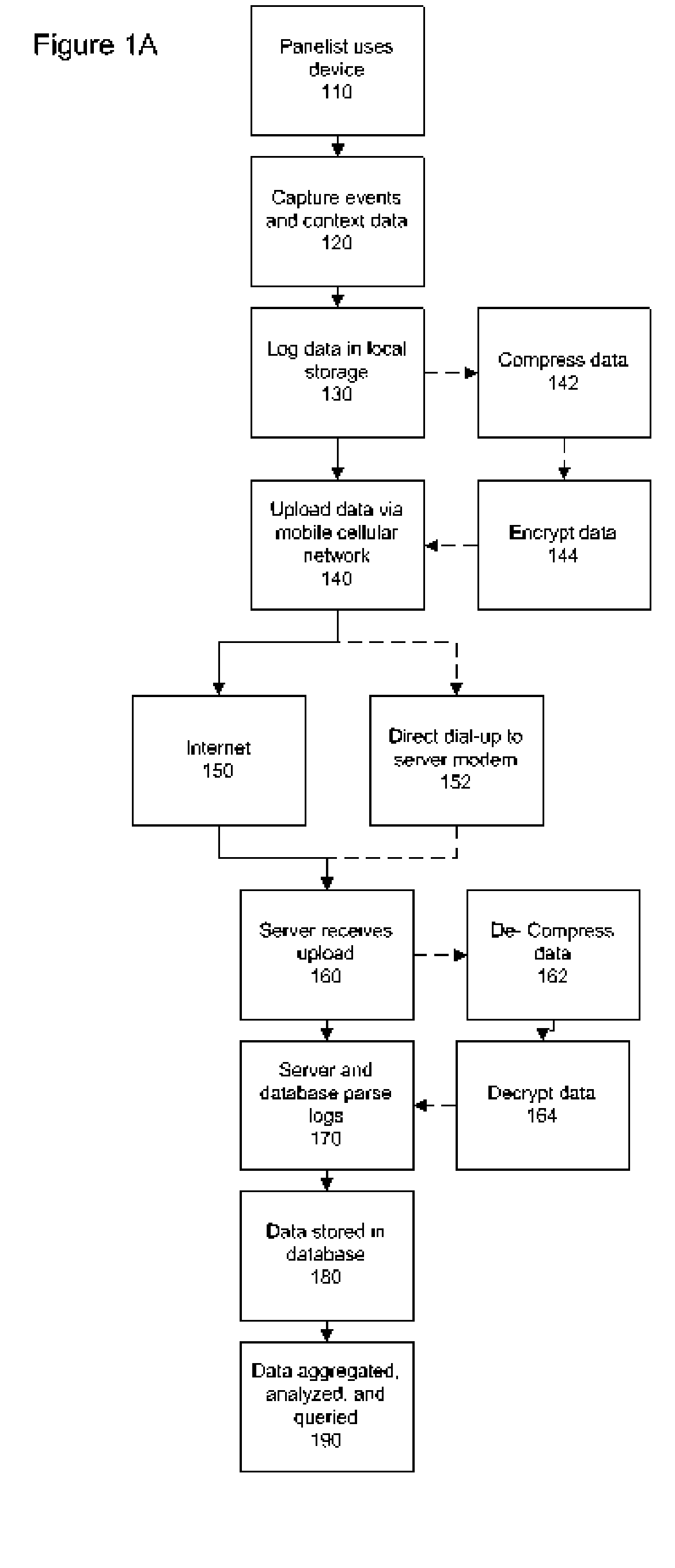System and method to track wireless device and communications usage
a wireless device and wireless communication technology, applied in the field of mobile cellular communications devices, can solve the problems of limited utility limited use of network-based systems for market research purposes, and rarely making them available to third parties, etc., to achieve a wide range of data access, short period of time, and low cost
- Summary
- Abstract
- Description
- Claims
- Application Information
AI Technical Summary
Benefits of technology
Problems solved by technology
Method used
Image
Examples
Embodiment Construction
[0039] System and Method Overview
[0040] According to the present invention, a system is provided to monitor, collect, store, and transport information concerning the use of a mobile cellular communications device.
[0041]FIG. 1 provides a general overview of the major components and data flows of the present invention. A number of consumers operate mobile cellular communications devices with an independent operating system (such as Symbian or Palm) or facility to operate third-party applications (such as Java) (10). Data collected is uploaded via a cellular wireless connection (20) and routed through to the Internet (30) to a centralized server (40) and database node (50).
[0042]FIG. 1A provides a more detailed diagram summarizing the overall process flow of the present invention. A user monitoring, recording, and reporting system (“logging software”) operates in one or more mobile cellular communications devices (“mobile devices”). A user of no particular skill operates the mobile ...
PUM
 Login to View More
Login to View More Abstract
Description
Claims
Application Information
 Login to View More
Login to View More - R&D
- Intellectual Property
- Life Sciences
- Materials
- Tech Scout
- Unparalleled Data Quality
- Higher Quality Content
- 60% Fewer Hallucinations
Browse by: Latest US Patents, China's latest patents, Technical Efficacy Thesaurus, Application Domain, Technology Topic, Popular Technical Reports.
© 2025 PatSnap. All rights reserved.Legal|Privacy policy|Modern Slavery Act Transparency Statement|Sitemap|About US| Contact US: help@patsnap.com



